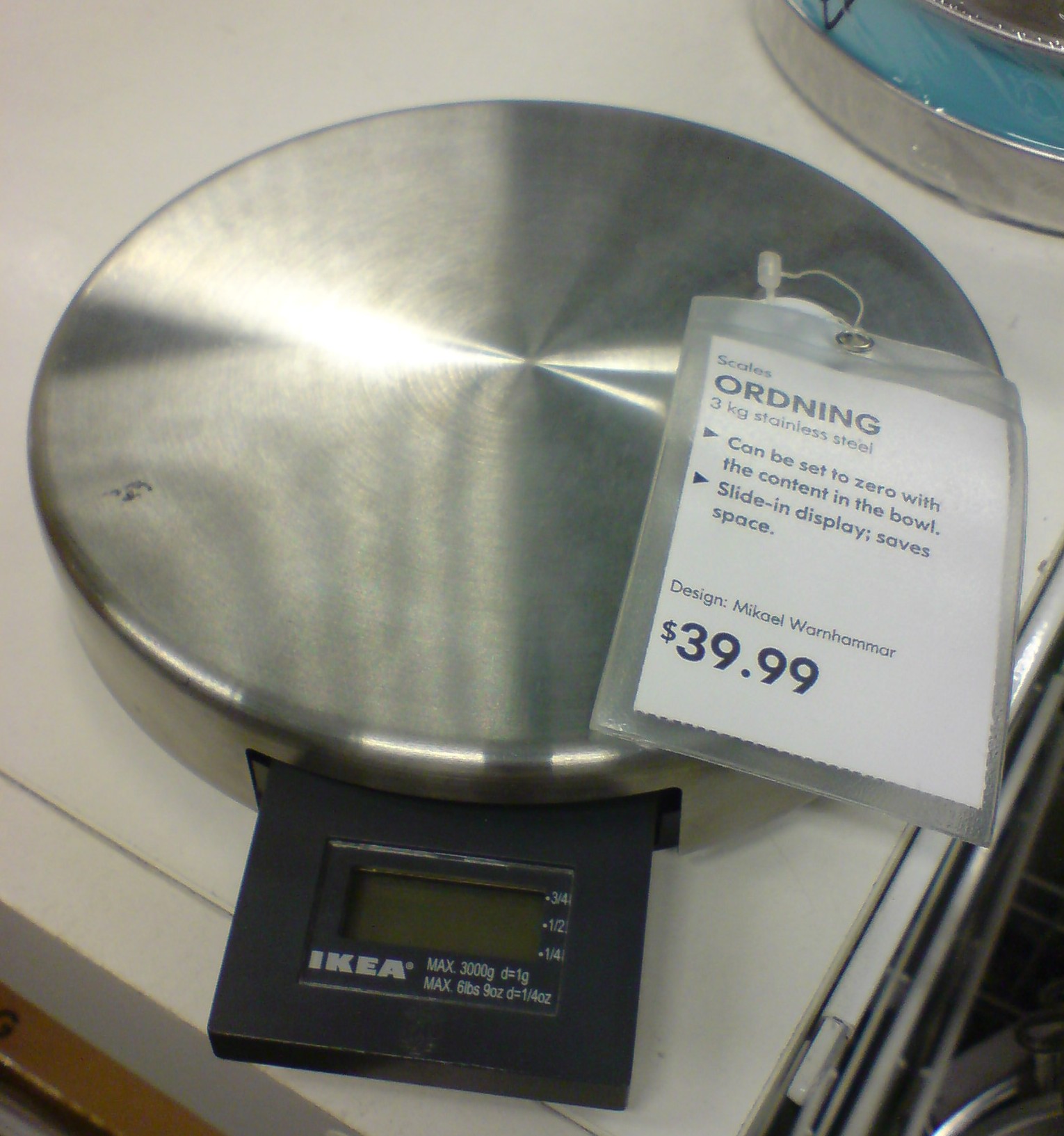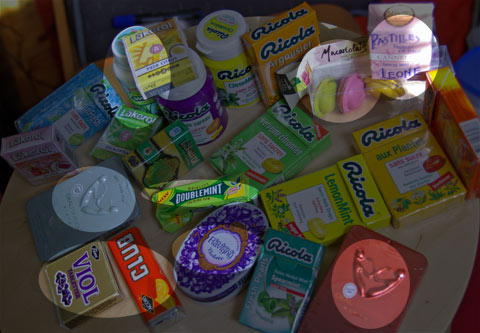Let me start with a series of questions…
- Did you hear about the Singaporean blogger who got entangled in a mess of accusation and counter-accusation about a free meal? At first it seemed like ego, but later facts indicate it was other people’s egos, plus some PR/restaurant dirty dealing.
- Do you sigh with disillusionment when you discover yet another foodblog that now features effusive sponsored product or restaurant reviews?
- Did you know that there is now a chocolatier (Melb.) and a patisserie (Syd.) banned from all mention on Syrup & Tang because of deliberate pseudo-genuine comments promoting (“shilling”) their products? (And a third (Melb.) will be if they try once more.)
- Were you invited by PR company Media Moguls to an unspecified “blogger event”, but first had to provide your visitor stats? (In correspondence I described this as “rudely presumptuous”.)
- Have you seen comments on other blogs protesting their “genuine punter” nature and recommending an establishment? Some of those come from the restaurant’s own internet connection… funny, that.
-
Have you received PR-spam because a Melbourne blogger working for a PR company appears to have added her private address book to the company’s database? (I’ll name her if I get one more piece of unsolicited garbage in my inbox.)
- Have you heard about (at least one) Melbourne blogger who visits cafés, asks probing questions during busy service, and conspicuously takes flash photos without asking? (It’s about the lack of courtesy, not the photos.)
- Have you noticed that bloggers are increasingly being invited to PR events for which there is an entry/attendance fee? (They wouldn’t try to pull that one on mainstream media!)
It seems foodblogging has matured far enough to be entwined in a pretty tiresome game of cat and mouse with restaurateurs and public relations (PR) companies, egos, money and more.
This article has been brewing for a few months, as I tried to reconcile my opinions about freedoms, community, advertising and blogging. Luckily for me, Brian at Fitzroyalty was perhaps the first to loudly object in detail to some recent developments while I was still vacillating, then Claire published an encouraging post reminding readers of how diverse and interesting the blogosphere can be. Ed also wrote a simple to-the-point post back in June.
I’ve rejigged what I first intended to write, but there will be some natural overlap with other people’s articles (some of which I may have overlooked or forgotten) or comments. As each of our readerships differ a bit, I hope some readers don’t mind the overlap.
When I started blogging, I knew there were different types of bloggers, variously wanting to share, inform, diarise, explore, think, make friends, review, cook, boast, show off, promote a business, etc. Sydney blogs were already known for a bit of a commercial tinge here and there. More numerous Melbourne blogs were generally a bit less “blingy” and there seemed to be more interaction across a broad range of people.
Our first three gatherings were open-invitation, sponsor-free, competition-free, prize-free, warm affairs, with a bit of trepidation but not much showing off. They were enjoyable. Reading reports of the recent commercially-coloured get-together, I was interested to see how few of Melbourne’s long-standing bloggers attended, and I’m guessing more than a few were put off by the change in tone (though I’m not claiming that the people who did attend were at fault, or didn’t enjoy themselves).
Blogs meet commerce
Just like magazines or TV shows, the publisher/producer of a blog chooses what to present and the readers can choose what content they consume. It could therefore be argued that any blogger can do anything they choose (a point made by a number of irritated commenters on Phil Lees’s post earlier in the year that (rather inconsistently) flagged supposedly commercialised bloggers).
Bloggers develop specialisations, styles, or find themselves growing business ideas out of their blogs. Many have successfully achieved a respectful (to the readers) balance between their new business and the original goals of the blog. For many bloggers, there are also external commercial temptations along the way and each blogger has to work out how or to what degree they embrace that.
Some people believe that all commercial interactions are in some way “compromising”, but I think that’s both rigid and rather unrealistic. It’s possible to run obvious ads, for instance, without that affecting your own content (though I think it can degrade the perceived quality of a blog — see some US blogs, for instance, plastered head to toe in banners and commercial bling). It’s also clear that foodlovers can benefit from access to events and information that they might not usually get, even if this is in the context of marketing activity of some sort. Mild bias might be inevitable, but it’s unavoidable under any circumstance as a consumer anyway. Managing the bias is a more critical issue as a blog owner.
As the years have passed, some people have joined blog networks, such as Foodbuzz, only to discover that these were intended in no small part as revenue generators seducing bloggers into a sort of interdependence with niche advertisers. And others have joined ad networks like the much mentioned Nuffnang, which is perhaps little different from Google as an display-ad provider, but has successfully persuaded many bloggers to compromise the integrity of their content by variously providing freebies for review, sometimes with editorial guidance, and arranging events or access to events where most bloggers feel obliged to write at least moderately positive things.
Meanwhile, PR companies have embraced blogs as genuine media participants and therefore fair game for a myriad of marketing approaches (Another Outspoken Female’s rants about this (1, 2) are excellent), but pay-for-attendance event invitations reveal that the respect is fairly limited.
At the same time, individual businesses and talentless PR people seek increasingly to manipulate blog readers by posting false or anonymous comments on blogs, willingly lying about their “genuine” nature, and too many bloggers let this happen (a fair proportion of such comments are quite obviously false, either through the wording or the technical info accompanying the comment).
Clean reputation matters, for everyone
Is all this a problem if bloggers and blog-readers get to choose what they write or read? Yes. There is an obvious risk that the hard-fought-for recognition of food bloggers as genuine and honest reviewers, writers or cooks is being directly undermined. Some bloggers who started to ride the PR gravy train have already reassessed their enthusiasm, becoming more careful in choosing the invitations or freebies they accept, and approaching reviewing opportunities with a far more critical eye. That’s a natural development, and I hope that trend continues.
Running advertorial content, sponsored reviews, or similar material can endanger the respect people have for your own blog, or for the whole spectrum of foodbloggers. Unfortunately, some comments on both Brian’s and Phil’s posts, show there are people who feel an entitlement to some sort of commercial reward for blogging or who will uncritically promote a product as long as it is a basic “fit” with their blog content, and I doubt they care if the scepticism they cause spreads to the large numbers of other bloggers. As the flattering PR attention increases, will we see a wave of blogging egos demanding privilege and special treatment? I’ve heard rumours that it’s happening here already.
Many bloggers have been trying for years to educate PR people about blogs, respectful engagement, and not filling inboxes with irrelevant rubbish. It would be a pity to see the public and mainstream media regarding foodblogs as untrustworthy PR mouthpieces, where previously the biggest battles were with restaurateurs who hated bloggers for telling the genuine everyday experience of a customer, and journalists who loathed the unedited and sometimes faster-to-the-news nature of blogs.
Will the good intentions and often noble goals of many foodbloggers be suffocated by tempations, egos, and the taint of careless commercialism? Many longstanding bloggers have been quieter than usual in the last six months, perhaps in part due to disquiet at the change in tone.
A note about my own sites:
I like reviewing stuff, and originally intended to do much more than I have over the last three and a half years. Only on very rare occasions have I received free samples or attended events, and usually they were too rubbish to write about. Nonetheless, I don’t oppose writing about things I discover as the result of recommendation or press release and genuinely find worth commenting on, but whatever the case, I review without fear or favour (which might also be why I’m rarely offered freebies;) ).
I deliberately separate most of my regular macaron-making announcements from the main Syrup & Tang site and RSS feed because I don’t expect my readers will want to wade through frequent commercial announcements. I think it’s a sensible, respectful approach which many other bloggers have also taken.
I own a book review website, The Gastronomer’s Bookshelf, and occasionally make announcements on Syrup & Tang about the reviews. The site was set up because there were so many crap, PR-driven book reviews out there. Blogs are particularly problematic, because most bloggers feel obliged to write positively about free books they receive (especially a problem in the US and UK). On The Gastronomer’s Bookshelf we tell all publishers that if they supply a book, they do so at their own risk, because we definitely publish critical reviews.
A note about comments:
Comments must be respectful and constructive, whether agreeing or disagreeing. There is no right to comment (this is my website), but most comments are usually published after checking. Anonymous comments for publication can be emailed directly to me (you have to identify yourself to me, but request public anonymity, with a good reason). Private emails which are rude to me might be published.














